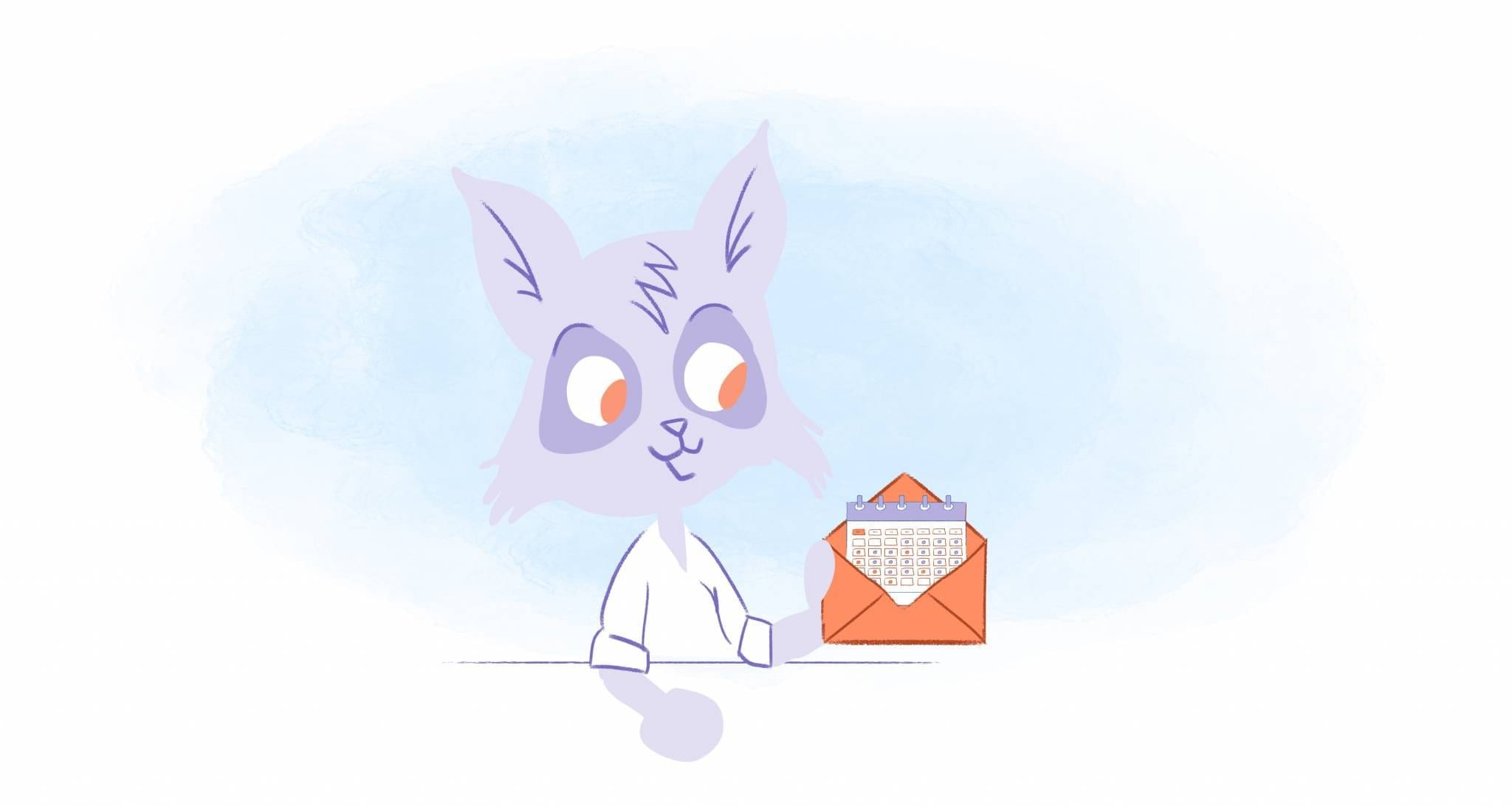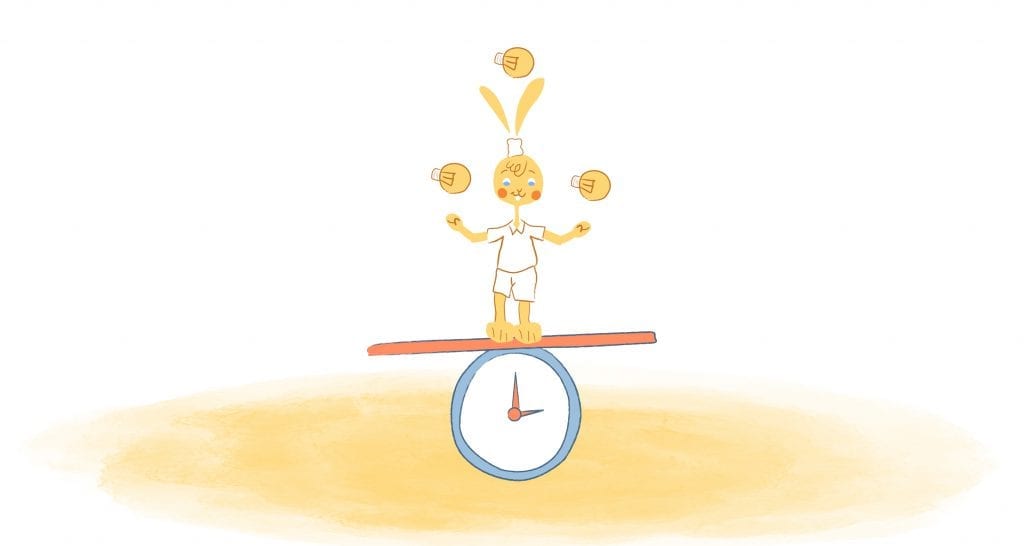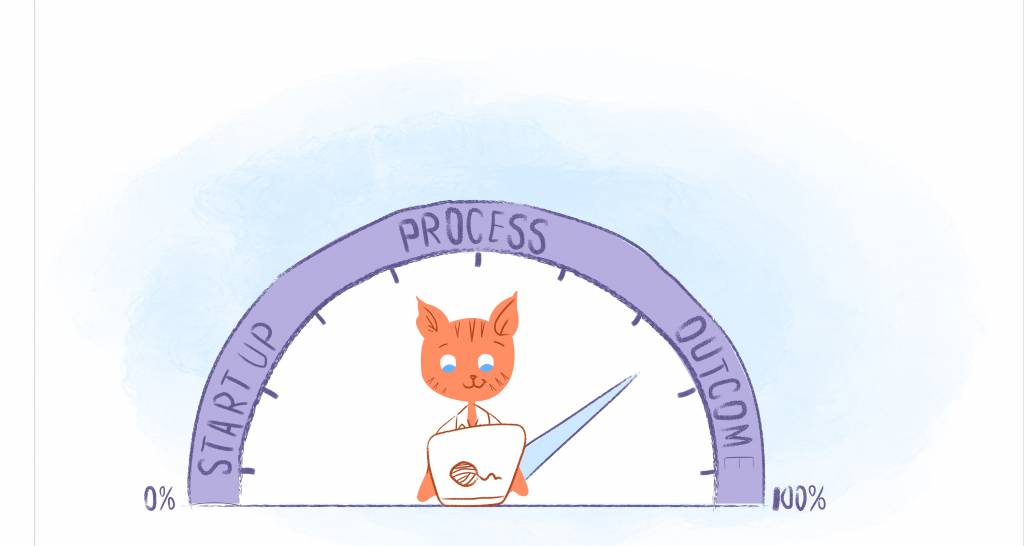

Multitasking is often the result of our relentless pursuit of productivity. Even though multitasking may seem efficient to complete our to-do lists, it usually leads to disorganization and overwhelm. What’s more, Focusing on a single task while juggling work emails, responding to text messages, and cooking dinner is incredibly exhausting.
Using the F.L.O.W. model as a framework to reach optimal performance, this blog post explores the complexities of productivity and the limitations of multitasking. Further, the F.L.O.W. state can help you become more productive by revealing the science behind it.
Getting into the Flow
You’re completely absorbed and immersed in an activity when you’re in flow. If you and your team are totally “in the zone” during work, you may have experienced something similar to this feeling.
Although flow theory suggests that it’s not just spontaneous, it can also be actively created. This can be used for time management, project management, teamwork, and a host of other things.
A Very Quick History of Flow Theory
In 1975, psychologist Mihaly Csikszentmihalyi coined the term flow to describe artists who become so immersed in their work that they ignore, or simply ignore, the need for food, drink, and sleep.
Csikszentmihalyi suggested, in a 2004 TED talk, that flow provides an “optimal experience” of whatever task is being undertaken, leading to greater satisfaction. As a part of positive psychology, it is a state of mind that positively impacts an individual’s entire well-being.
The Myth of Multitasking: Why Our Brains Struggle with Divided Attention
Despite the misconceptions, our brains are designed to focus on one task at a time. As a result of multitasking, our brains are forced to switch contexts rapidly, creating a context-switching cost. As a result of this constant switching, we are disrupted in our cognitive flow, leading to:
- Reduced accuracy. Accuracy can be decreased by multitasking.
- Increased errors. When our attention is divided, we are more prone to making mistakes, negatively impacting our work quality.
- Executive function is impaired by multitasking. In the brain, executive functions are responsible for managing multitasking. They determine how, when, and in what order specific tasks are performed by controlling and managing cognitive processes.
- Diminished memory. We may not be able to retain information effectively if we are multitasking.
- Higher stress levels. As we juggle tasks, our mental and emotional health can suffer.
- It’s bad for business. Multitasking has been estimated to reduce productivity by 40% rather than aiding it.
“The more we multitask, the less we actually accomplish because we slowly lose our ability to focus enough to learn,” explains neuropsychologist Cynthia Kubu, PhD. “If we’re constantly attempting to multitask, we don’t practice tuning out the rest of the word to engage in deeper processing and learning.”
Introducing the F.L.O.W. Model
We should embrace the F.L.O.W. model rather than giving in to the illusion of multitasking. Our idea was inspired by Csikszentmihalyi’s work.
F.L.O.W. stands for Focus, Learning, Ownership, and Worthwhile. To cultivate deep focus and optimal productivity, we should incorporate the following principles into our work routine:
Focus.
As with most things, achieving the flow state of mind takes time. It takes a while to settle into a task and then a little more time to tap into it. As such, make sure nothing gets in the way of that.
If necessary, set aside a block of time, or use time management techniques like Pomodoro to ensure your attention is on the task at hand. Besides stashing your phone, you’ll want to silence notifications and steer clear of anything that has the potential to distract you.
Learning.
Flow requires continual challenges and information seeking since it indicates mastery of a particular skill.
Therefore, adopt a growth mindset. Instead of simply checking tasks off a list, approach them with a desire to learn and improve. Engaging intrinsic motivation fuels flow state and fuels engagement.
Ownership.
Working on a task with a specific, finite outcome is part of getting into a flow state. When you know exactly what you’re working on, it will be easier for you to achieve the right mindset.
Even though you could set a time goal, having a clear end or completion point is often more effective. You also feel more in control when you know what you want to accomplish.
Simply put, take ownership of your work. Establish clear goals, be proactive, and take responsibility for your actions. In addition to fostering a deeper sense of responsibility, it increases motivation and productivity.
Worthwhile.
Make your work meaningful and challenging. In other words, connect your tasks with your values and larger goals. Understanding your purpose and the “why” of what you are doing fuels the flow state.
It’s like playing a video game as the advantageous hero. Several video games use flow theory in their design. A challenging activity is more engaging, after all. You may be able to make the task harder if you can’t alter the task itself.
Putting the F.L.O.W. Model into Practice
You can incorporate the F.L.O.W. model into your daily routine by following these tips:
- Create a dedicated workspace. Create an environment free of clutter that minimizes distractions and promotes focus.
- Schedule focused work sessions. Block out time in your calendar for uninterrupted deep work.
- Prioritize ruthlessly. Decide which tasks are most important and begin with them. Non-essential tasks should be delegated or eliminated.
- Embrace the power of “no.” Don’t hesitate to decline if an assignment overwhelms your schedule or isn’t aligned with your goals.
- Reward yourself. Celebrate your accomplishments, no matter how big or small. This behavior reinforces self-motivation.
Beyond Productivity: The Benefits of Flow
Increased productivity is only one of the benefits of the F.L.O.W. model. In a flow state, we experience:
- Enhanced creativity and problem-solving skills.
- Our work is more enjoyable and satisfying.
- Anxiety and stress are reduced.
- Feeling more fulfilled and purposeful.
Mastering the art of focused work and embracing the F.L.O.W. model can help us regain control of our time and attention. We can overcome the chaos of multitasking through deep focus, achieve our goals, find fulfillment, and thrive despite a world that demands our constant attention.
Ultimately, the key to success is not doing more but doing less well.
FAQs
What is the Flow Model?
The Flow Model, or Flow Theory, was developed by psychologist Mihaly Csikszentmihalyi. When fully immersed in an activity, individuals experience full engagement, focused attention, and enjoyment.
What are the characteristics of Flow?
The following are some key characteristics of Flow:
- Clear goals. Aside from knowing what needs to be done, the person knows how to do it.
- Immediate feedback. Individuals receive immediate feedback on their performance, allowing them to adjust their actions as necessary.
- Challenge-skill balance: The activity is challenging enough to require a complete effort but not so complex that it feels overwhelming.
- Action-awareness merge. You lose track of time and feel self-conscious while focusing on the task.
- Sense of control. Throughout the activity, the individual controls their actions and the outcome.
How does Flow benefit you?
There are several benefits to experiencing Flow, including:
- Increased motivation and enjoyment. There is something intrinsically motivating and enjoyable about flow.
- Improved performance. It is common for individuals to perform at their peak level when they are in Flow.
- Enhanced creativity and problem-solving. We can come up with new ideas and solutions when we’re flowing.
- Reduced stress and anxiety. When you’re in flow, you can forget about worries and anxiety.
How can I experience Flow more often?
It is not always possible to experience Flow, but there are some strategies you can try to increase your chances:
- Set clear goals. Focusing your attention and effort on this will help you achieve your goals.
- Choose challenging but achievable tasks. Try something new, but don’t take on more than you can handle.
- Minimize distractions. To fully immerse yourself in the activity, find a quiet environment and eliminate distractions.
- Focus on the present moment. Don’t worry about the past or the future.
- Practice mindfulness. It is possible to better control your feelings and thoughts by practicing mindfulness techniques.
Image Credit: Aleksandr Neplokhov; Pexels











Deanna Ritchie
Editor-in-Chief at Calendar. Former Editor-in-Chief and writer at Startup Grind. Freelance editor at Entrepreneur.com. Deanna loves to help build startups, and guide them to discover the business value of their online content and social media marketing.